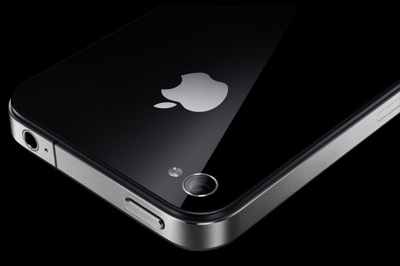 Weird Stuff
Weird Stuff  Weird Stuff
Weird Stuff  Our World
Our World 10 Archaeological Discoveries of 2025 That Refined History
 Weird Stuff
Weird Stuff 10 Fascinating Facts You Might Not Know About Snow
 Miscellaneous
Miscellaneous Top 10 Things Crypto Was Supposed to Change & What Actually Did
 History
History 10 Huge Historical Events That Happened on Christmas Eve
 Music
Music 10 Surprising Origin Stories of Your Favorite Holiday Songs
 History
History 10 Less Than Jolly Events That Occurred on December 25
 Weird Stuff
Weird Stuff 10 Funny Ways That Researchers Overthink Christmas
 Politics
Politics 10 Political Scandals That Sent Crowds Into the Streets
 Weird Stuff
Weird Stuff Ten Bizarre Facts About The Doge Meme
 Weird Stuff
Weird Stuff 10 Weird Things People Used to Do at New Year’s
 Our World
Our World 10 Archaeological Discoveries of 2025 That Refined History
 Weird Stuff
Weird Stuff 10 Fascinating Facts You Might Not Know About Snow
Who's Behind Listverse?

Jamie Frater
Head Editor
Jamie founded Listverse due to an insatiable desire to share fascinating, obscure, and bizarre facts. He has been a guest speaker on numerous national radio and television stations and is a five time published author.
More About Us Miscellaneous
Miscellaneous Top 10 Things Crypto Was Supposed to Change & What Actually Did
 History
History 10 Huge Historical Events That Happened on Christmas Eve
 Music
Music 10 Surprising Origin Stories of Your Favorite Holiday Songs
 History
History 10 Less Than Jolly Events That Occurred on December 25
 Weird Stuff
Weird Stuff 10 Funny Ways That Researchers Overthink Christmas
 Politics
Politics 10 Political Scandals That Sent Crowds Into the Streets
 Weird Stuff
Weird Stuff Ten Bizarre Facts About The Doge Meme
10 Unbelievable Technologies that Exist Now
We have now passed the half way point of the year, and what a great year it is shaping up to be. Let’s take a step back, though, to a time when things were simpler. Friends was the coolest show on TV, Britney Spears was a new, annoying sensation and The Matrix was better than anything that had ever existed. Ever.
Technology was really starting to pick up back then, and the Internet was finally starting to seem like more than a flash in the pan. If only we could go back to those times, even if but for a moment, and see the innocence and naivety in our own eyes as we looked onto a wonderful future of incredible technological advancement.
The state of technology in 1999 was pretty impressive, we thought, and it was hard to imagine things getting much better. We were doing pretty well for ourselves and surely wouldn’t see any major technological advancements for decades to come.
Ten years later, the world is a very different place than we never could have imagined, in our wildest of dreams. There has been a surge of revolutionary technologies in the last decade that even Science Fiction couldn’t have predicted. Everything from the way we play, to the way we think, has been challenged due to these advancements. Here are just a few.

Just before the turn of the millennium, portable gaming was booming. Most people that had a portable gaming device sported a Gameboy, and the really lucky ones had a Gameboy Color. There was always that one rich kid at Pizza Hut, too, with the Sega Gamegear that people couldn’t stop talking about, and Pokemon was taking the world by storm.
At night, you would fall asleep with images of the Atari Lynx swimming around in your head and hope that one day you could afford one. 10 years later, you’re glad that your parents never sprung for one of them.
Not long after that part of your life, the portable gaming world changed dramatically. With their staunch lead, Nintendo started to be more experimental and it paid off. The Gameboy Advance put quality graphics that were slightly above Super Nintendo, and sound in the palm of your hand, and further still the Nintendo DS (a few years later) managed to squeeze out post-N64 quality gaming with a touch-screen, and opened up a whole new world of gaming possibilities.
What’s more impressive is that, for once, Nintendo had some serious competition in the portable gaming racket. Sony took their powerful juggernaught, the Playstation 2, and compressed it into a comfortable, handheld console that demanded respect. Graphics and sound quality that Sony was notorious for could now be enjoyed, portably, on a beautiful 4.3″ screen.
If only you knew, back in your room 10 years ago, that things were about to change, and that one day you would forget all about the Atari Lynx… until you read about it in a Listverse article.

Electric cars have been on the tongues and minds of consumers for decades, and the conspiracies and facts behind their obvious exclusion in the automotive world have raised a lot of questions and frustrations. Electric cars will greatly reduce man-made pollution, make the roads quieter and safer, and take the icky smell out of the air at Quick-e-marts worldwide. They’re an obvious “next step” in technological evolution.
In 1999, however, during a time when much of the world experienced a great deal of prosperity, the electric car was little more than a pipe dream. We all thought it sounded like a neat idea but were reluctant to accept it as a real possibility in the near future.
Well, we were half right.
Hybrid cars have finally clawed their way into the spotlight. Their part-gasoline-part-electric functionality has brought the whole concept of being “carbon sensitive” into the mainstream. Gasoline cars got the job done, but required too much pollution and too low of gas mileage to be acceptable anymore. Electric cars were silent and gave off virtually no pollution, but had to be recharged every 50-100 miles. The hybrid was the perfect answer.
It’s true that we still have a few years (but possibly fewer than we think) until we see every car on the street be Electric Powered, but for now the number of cars that run at least *partially* on electric power would incite quite a bit of skepticism one decade ago.

In 1999, if you had an 8 gigabyte (gb) hard drive, you were the cool kid on the block. “What can you possibly fill that whole thing up with?” your friends would ask you.
Computer games you bought at the store fit on a single CD-ROM, and everyone knew that you had to wait for your hard drive to spin up before each level. Those of us who were especially caring of our expensive, magnetic, spindled drums of data would even run Scandisk and Defrag on them (which would take hours, of course). Things were looking up, too, as hard drive experts predicted that in the year 2000, 30gb hard drives could be as cheap as $200.
Now, imagine yourself waking up in the middle of the night because someone outside your window is throwing pebbles on it. When you open your window, you notice that they look exactly like you, only about 10 years older. They tell you not to worry, because in a single decade hard drives will be ridiculously smaller, lack any moving parts, be practically weightless and can withstand far more brutal environments.
Oh, and it’s far cheaper, too. You know that 8gb hard drive you just spent $150 on? You can get one that fits in your coin pocket for $15, down the street.

Remember ISDN? Integrated Service Digital Network? Although it’s possible that you do, it’s far more likely that you don’t. It was the closest thing to broadband in 1999.
No, the vast majority of people accessed the internet from a 56k modem. Those who were not at least in the lower-middle class, however, had to dink around a 14.4 modem, or worse: 2400 baud. It’s enough to make one shudder.
Back then, though, the internet was a much simpler place. Text, images and an occasional embedded MIDI were all that was expected of any given website. Animated GIF’s were the future, and Flash showed some serious potential.
These days, however, the internet is a wonderland of bandwidth-sucking marvels. Streaming video and music, BitTorrent and Cloud Storage systems are everyday necessities and require almost as much bandwidth as our hard drives do. If you were to try to watch a 10 minute Youtube video back in 1999, it would take 68 minutes to buffer. These days, if it takes more than 15 seconds, we get our ISP on the line.

Almost anyone can admit that when they first heard of the iPhone, they thought it was a hoax.
Criticize it, love it, boycott it; it’s undeniably one of the most influential changes to the consumer electronics world in the last 10 years. It has revolutionized how we see and use cell phones and has inspired numerous alternatives. These days, devices that have nothing to do with cell phone technology adopt the most popular features of the iPhone. Touch screens, flick-style scrolling, app-based operating systems (complete with some rendition of an ‘Application Repository/Market’ system), device screens that almost completely cover the system, drawer-style interface elements and mobile internet browsing have all become commonplace since the iPhone, and for good reason. The iPhone did what everyone wanted, but no one had yet accomplished.
Suddenly having the full, non-WAP-based internet at your fingertips was demanded by the masses. Many other devices offering similar features (Google Android, WebOS/PalmPre, etc.) sprung up to offer competition, which is a common sign of extreme influence over an entire industry. And let us not forget the iPhone 4g which is now offering video calling between phones – a dream that many of us thought impossible some twenty or so years ago.
To sit down and describe the iPhone to someone back in 1999 would be the equivalent of describing the Holodeck to someone today.

The Nintendo Wii has been criticized for its hype, but any way you look at it, it’s a revolutionary system. The graphics aren’t as good as the competition and the media capabilities are lacking among its peers, but the number of sales speaks for itself: The Wii is a hit. Why? Well, unless you call your local quarry an apartment complex, you know.
It’s motion-capture technology, among the multitude of other unique interfaces (the Wii Fit board, Nunchuck and numerous attachments to make them seem more like their digital counterparts), have set it above the rest. It’s, arguably, so impressive that most users can forgive its lackluster shortcomings. Even grandma is off the couch, now, and tossing a bowling ball down the lane.
Despite all of the controversies around the Nintendo Wii, remember that, in 1999, the best system on the market was the Dreamcast (which was considered ahead of its time). Along with the dreamcast was the Playstation and Nintendo 64. If you were to convince someone to pause Super Mario 64 for a moment and tell them that, in 10 years, there was going to be a system that allowed you to control the game by way of virtually free motion, they would laugh at you and go right back to stomping Goombas.

As with most technological advancements, we don’t know how good it can be until we see it. Television in 1999 was downright fuzzy by today’s standards. The visual differentiation between DVD and VHS was negligible and live TV was the highest quality it had ever been before.
The videophiles out there would watch their DVD’s on their computer screens, where it — for some reason — looked much crisper. Of course, the reason why it looked so much clearer was that it was higher resolution.
The average, standard definition television renders at about the equivalent of 640×480 pixel resolution. That was more than enough to see the hairs on Grace’s head, but had you an HD television, you’d be able to see Will’s five-o-clock stubble.
HD television is still not quite as common as standard definition, but if the other advancements on this list are any indication — that is about to change. The prices of consumer-level High Definition televisions is on the decline, and it’s expected that the number of HD TV’s in the United States will increase significantly this holiday season.
Think it’ll take another 10 years for an HD TV to be in the living room of every American Home?

Yes, yes, it’s true that the iPod isn’t the only MP3 player on the market, but given the fact that it was the first MP3 player to end up in the average person’s pocket is enough clout to put it on this list.
To understand the influence the iPod has had over music in general, you have to understand how much more it did than put a music player in the pockets of the everyman.
The iPod played a pivotal role in the MP3 format. With the ability to have a hard drive’s worth of songs in your pocket came the need to squeeze as many songs into a confined space as possible. The MP3 format, with sound quality that is indistinguishable from CD’s by the average ear, put thousands of songs where only dozens once stood. These days, an album of MP3’s is far more common than the CD, and more people are listening to music now on a daily basis than ever.

Wireless technology was still relatively immature in 1999. Cell phones were relatively common, but still a luxury (and a bit larger than they are, now). Texting wasn’t very popular, and data plans were light years behind where they are now. Beyond that, the only other common access to wireless technology was the radio stations we would play in our car.
The Internet was primarily accessed at home, or more commonly at higher speeds at your local library or your school’s computer lab. The internet was quickly building momentum, and local area networking (LAN) was pretty commonplace for LAN gaming and business communication. Few people were unaware of computer networking.
The problem, however, was wired connections and lack of portability. If you brought your laptop to work, it essentially became a small desktop, tethered forever to the wall for network access. Anyone familiar with the LAN party scene of the late 90’s remember how long it would take to get everyone connected to the network, able to “see” each other and, furthermore, able to communicate properly. No one complained much about the technology at the time, simply because no one realized how much easier it would be in the near future.
If you told someone in 1999 that, in 10 years, they could “beam” a video from a computer in one room to another computer halfway across the house, they would tell you it was science fiction. How could you transmit that amount of bandwidth over the airwaves? The concept was as alien as UFO’s.
What is really strange about the WiFi phenomenon is that it could be considered a nearly silent infiltration of consumer electronics. It seemed like overnight WiFi went from an interesting, speculative article you read in Wired to being advertised on every coffee shop window in town. Now, suddenly, you found yourself charging your laptop twice a day, instead of just leaving it plugged in and connected to the network all day long.

In the 2002 movie The Time Machine (and, also, the original masterpiece by H.G. Wells), a character named Vox calls himself, “a compendium of all human knowledge.”
That concept alone (even in 2002) was pretty remarkable. To have a single source, with an easy-to-use interface, for access to all the recorded knowledge that humans have ever achieved was a concept of wonder and awe that the average person could only dream about.
Then Wikipedia came. Now, right off the bat, no doubt many of you are warming up your keyboards to smash out disappointment in Wikipedia being cited as anything but a hacked together SuperBlog. It’s true, there is quite a bit of literary vandalism on Wikipedia and a huge portion of the cited resources within the site simply refer to *more* websites. However, the enormous amount of *verifiable* knowledge within is adequate enough to be considered — arguably — the largest collection of human knowledge ever compiled.
That concept alone, as amazing as it is, would likely be believable. A really huge website with a whole lot of text. Sites like that existed even back in 1999.
What would likey *not* be conceivable, is being able to hold all of that information in the palm of your hand, retrievable at any time. Any time that someone asks you about something that you don’t know, or if you find yourself lost for information in a jam or if you simply want to be able to prove someone’s claims as utterly false, that now is possible at a moment’s notice.
“But I can do that with my phone,” you might say. That’s true! Accessing Wikipedia from the data connection of your phone within decent range of a cell phone tower is possible in many populated areas right at this moment. However, once you find yourself with a dead cell phone or in the wilderness, your access to the compendium is lost.
Until now. The WikiReader boasts a full year of power off of two AAA batteries and no data access requirements of any kind. It’s Wikipedia in your pocket, no strings attached.
Who would have thought that Vox would exist before flying cars?








